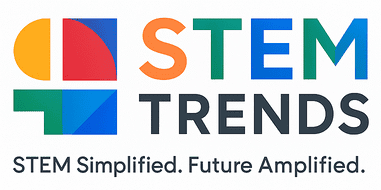How AI Is Redefining the Future of Work, Education, and Innovation
By John
Artificial intelligence (AI) is no longer just a futuristic concept—it’s a powerful force transforming the way we work, learn, and innovate. Across the U.S. and elsewhere, AI technologies are streamlining operations, enhancing learning experiences, and sparking breakthroughs in science, business, and creativity. As AI continues to evolve, it’s rapidly becoming a central driver of change across industries and institutions.
In this article, we explore how AI is redefining the future of work, education, and innovation—and what it means for individuals, companies, and communities.
1. The Future of Work: Smarter, Faster, and More Human-Centered
AI is automating routine tasks, optimizing productivity, and enabling professionals to focus on more meaningful and strategic work.
Automation and Efficiency:
AI is being widely used to handle repetitive and time-consuming tasks. In industries like manufacturing, logistics, and finance, machine learning algorithms and robotic process automation (RPA) are streamlining everything from inventory management to financial audits. A report by PwC estimates that AI could contribute up to $15.7 trillion to the global economy by 2030, with much of that coming from labor productivity improvements.
Enhanced Decision-Making:
AI-driven analytics tools help businesses make smarter decisions by interpreting large volumes of data in real-time. From sales forecasting to customer behavior analysis, AI provides insights that would take humans days—or even weeks—to uncover.
New Job Roles and Skills:
While AI may replace some jobs, it’s also creating new ones. Roles like AI ethics officers, data scientists, machine learning engineers, and prompt designers are in demand. The World Economic Forum predicts that AI will displace 85 million jobs by 2025—but will also create 97 million new roles, especially in fields that blend human creativity with machine intelligence.
Remote Work and Collaboration:
AI tools are powering smart virtual assistants, automated transcription, and collaboration platforms that make remote work smoother. Tools like Zoom’s AI Companion and Microsoft Copilot are already making meetings more productive by summarizing discussions and assigning action items.
2. Education: Personalized, Accessible, and Engaging
AI is transforming education from a one-size-fits-all model into a personalized, data-driven experience that adapts to individual learning styles.
Personalized Learning Paths:
Adaptive learning platforms like Khan Academy and Coursera use AI to tailor lessons based on a student’s progress, strengths, and weaknesses. AI systems track how learners respond to material and adjust content accordingly. This kind of customization is especially helpful for students with learning differences or those who need more flexible pacing.
Artificial Intelligence-Powered Tutoring:
AI chatbots like ChatGPT are being used to offer instant help with homework, practice problems, and concept explanations. These tools provide around-the-clock assistance—particularly valuable for students in remote or underserved areas.
Administrative Automation:
Educators are also benefiting from AI. From grading quizzes to managing schedules and responding to routine student inquiries, AI is reducing the administrative burden, allowing teachers to focus more on instruction and student engagement.
Bridging Gaps in Access:
Virtual AI-powered classrooms and language translation tools are helping bridge the digital divide. Students who speak different languages or live in rural areas now have access to high-quality educational content, thanks to machine translation and intelligent content delivery systems.
3. Innovation: Fueling the Next Big Breakthroughs
AI isn’t just enhancing what we already do—it’s helping us imagine and build entirely new possibilities.
Accelerated Research and Development:
In medicine, AI is being used to develop new drugs faster. Tools like AlphaFold from DeepMind have revolutionized protein folding predictions, potentially speeding up cures for diseases like cancer or Alzheimer’s. In climate science, AI models help simulate weather patterns and optimize renewable energy systems.
Creative Expression and Design:
Artificial intelligence is making waves in creative industries, from music composition to digital art. Artists are collaborating with tools like DALL·E, Runway, and Adobe Firefly to generate visuals, music scores, and video effects. While some critics raise concerns about originality, many creators view AI as a collaborative partner that enhances human expression.
Entrepreneurship and Product Development:
Startups are using AI to build smarter products—from AI-powered customer support to intelligent home devices. Tools like ChatGPT and GitHub Copilot allow solo entrepreneurs and small teams to ideate, build, and launch faster than ever before.
Democratizing Innovation:
AI is lowering barriers to innovation. You don’t need a PhD in computer science to launch an AI startup or build a data-driven app. No-code and low-code platforms are enabling non-technical founders to harness Artificial intelligence for real-world solutions.
Challenges and Opportunities Ahead
While AI presents immense opportunities, it also comes with challenges that need thoughtful attention:
Ethical Use: There are growing calls for transparency, fairness, and accountability in how Artificial intelligence systems make decisions—especially in hiring, law enforcement, and finance.
Bias and Discrimination: If not properly managed, AI can reinforce existing societal biases.
Job Displacement Fears: Workforce reskilling is essential to help people transition into new roles as Artificial intelligence reshapes traditional jobs.
Fortunately, many companies and institutions are investing in AI literacy programs, workforce development, and ethical frameworks to ensure the transition is inclusive and responsible.
Final Thoughts
Artificial intelligence is not just another wave of technology—it’s a transformative shift that’s redefining how we work, learn, and innovate. For individuals, this means embracing lifelong learning and adaptability. For organizations, it means rethinking strategy, culture, and leadership. And for society, it’s about ensuring that this powerful technology serves the greater good.
In the end, the future shaped by AI doesn’t have to be cold or impersonal. If used thoughtfully, it can be more human than ever—empowering people to learn better, work smarter, and imagine bigger.


